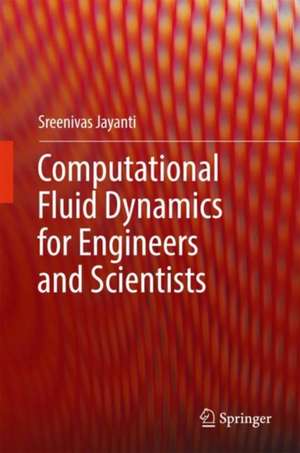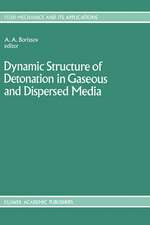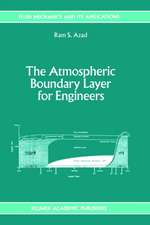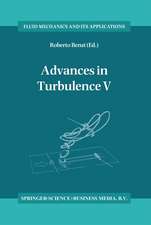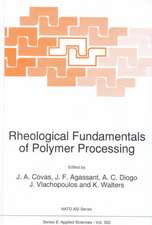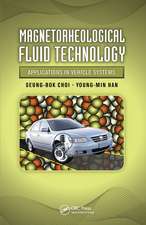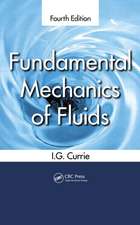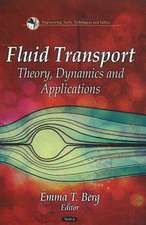Computational Fluid Dynamics for Engineers and Scientists
Autor Sreenivas Jayantien Limba Engleză Hardback – 29 ian 2018
Presuming no more knowledge than college-level understanding of the core subjects, the book puts together all the necessary topics to give the reader a comprehensive introduction to CFD. It includes discussion of the derivation of equations, grid generation and solution algorithms for compressible, incompressible and hypersonic flows. The final two chapters of the book are intended for the more advanced user. In the penultimate chapter, the special difficulties that arise while solving practical problems are addressed. Distinction is made between complications arising out of geometrical complexity and those arising out of the complexity of the physics (and chemistry) of the problem. The last chapter contains a brief discussion of what can be considered as the Holy Grail of CFD, namely, finding the optimal design of a fluid flow component. A number of problems are given at the end of each chapter to reinforce the concepts and ideas discussed in that chapter.
CFD has come of age and is widely used in industry as well as in academia as an analytical tool to investigate a wide range of fluid flow problems. This book is written for two groups: for those students who are encountering CFD for the first time in the form of a taught lecture course, and for those practising engineers and scientists who are already using CFD as an analysis tool in their professions but would like to deepen and broaden their understanding of the subject.
| Toate formatele și edițiile | Preț | Express |
|---|---|---|
| Paperback (1) | 494.70 lei 6-8 săpt. | |
| SPRINGER NETHERLANDS – 4 iun 2019 | 494.70 lei 6-8 săpt. | |
| Hardback (1) | 652.64 lei 6-8 săpt. | |
| SPRINGER NETHERLANDS – 29 ian 2018 | 652.64 lei 6-8 săpt. |
Preț: 652.64 lei
Preț vechi: 767.81 lei
-15% Nou
Puncte Express: 979
Preț estimativ în valută:
124.90€ • 129.41$ • 104.24£
124.90€ • 129.41$ • 104.24£
Carte tipărită la comandă
Livrare economică 22 martie-05 aprilie
Preluare comenzi: 021 569.72.76
Specificații
ISBN-13: 9789402412154
ISBN-10: 9402412158
Pagini: 408
Ilustrații: XII, 402 p. 107 illus., 56 illus. in color.
Dimensiuni: 155 x 235 x 32 mm
Greutate: 0.76 kg
Ediția:1st ed. 2018
Editura: SPRINGER NETHERLANDS
Colecția Springer
Locul publicării:Dordrecht, Netherlands
ISBN-10: 9402412158
Pagini: 408
Ilustrații: XII, 402 p. 107 illus., 56 illus. in color.
Dimensiuni: 155 x 235 x 32 mm
Greutate: 0.76 kg
Ediția:1st ed. 2018
Editura: SPRINGER NETHERLANDS
Colecția Springer
Locul publicării:Dordrecht, Netherlands
Cuprins
Preface.- Table of contents.- 1 Introduction.- 2 Equations Governing Fluid Motion.- 3 Basic Concepts of CFD.- 4 Solution of Navier Stokes Equations.- 5 Solution of Linearized Algebraic Equations.- 6 Dealing With Irregular Flow Domains and Complex Physical Phenomena.- 7 CFD and Flow Optimization.- References.- Index.
Recenzii
“A book that can be read from different approaches: the student's approach in the process of professional training for whom constitutes a valuable aid as a result of its didactic presentation illustrated with examples and exercises that facilitate learning and understanding of the topics covered. … The engineer will find modern tools to analyze problems find solutions and make decisions during his professional practice.” (Melio Sáenz, researchgate.net, July, 2018)
Notă biografică
Dr. Sreenivas Jayanti obtained his BTech degree in mechanical engineering from IT-BHU, Varanasi, India; MS in nuclear engineering from Ohio State University, Columbus, USA; DEA in fluid mechanics from INPG, Grenoble, France; and PhD in chemical engineering from Imperial College, London. After a three-year PDF at Imperial College, he returned to India and has been with IIT Madras since 1995. He is currently a professor in the department of chemical engineering.
Dr. Jayanti’s research interests include computational fluid dynamics, multiphase flow, combustion and fuel cells. He has published 70 research articles in reputed journals in these areas. He has also served as Associate Editor of International Journal of Heat and Mass Transfer.
Dr. Jayanti’s research interests include computational fluid dynamics, multiphase flow, combustion and fuel cells. He has published 70 research articles in reputed journals in these areas. He has also served as Associate Editor of International Journal of Heat and Mass Transfer.
Textul de pe ultima copertă
This book offers a practical, application-oriented introduction to computational fluid dynamics (CFD), with a focus on the concepts and principles encountered when using CFD in industry.
Presuming no more knowledge than college-level understanding of the core subjects, the book puts together all the necessary topics to give the reader a comprehensive introduction to CFD. It includes discussion of the derivation of equations, grid generation and solution algorithms for compressible, incompressible and hypersonic flows. The final two chapters of the book are intended for the more advanced user. In the penultimate chapter, the special difficulties that arise while solving practical problems are addressed. Distinction is made between complications arising out of geometrical complexity and those arising out of the complexity of the physics (and chemistry) of the problem. The last chapter contains a brief discussion of what can be considered as the Holy Grail of CFD, namely,finding the optimal design of a fluid flow component. A number of problems are given at the end of each chapter to reinforce the concepts and ideas discussed in that chapter.
CFD has come of age and is widely used in industry as well as in academia as an analytical tool to investigate a wide range of fluid flow problems. This book is written for two groups: for those students who are encountering CFD for the first time in the form of a taught lecture course, and for those practising engineers and scientists who are already using CFD as an analysis tool in their professions but would like to deepen and broaden their understanding of the subject.
Presuming no more knowledge than college-level understanding of the core subjects, the book puts together all the necessary topics to give the reader a comprehensive introduction to CFD. It includes discussion of the derivation of equations, grid generation and solution algorithms for compressible, incompressible and hypersonic flows. The final two chapters of the book are intended for the more advanced user. In the penultimate chapter, the special difficulties that arise while solving practical problems are addressed. Distinction is made between complications arising out of geometrical complexity and those arising out of the complexity of the physics (and chemistry) of the problem. The last chapter contains a brief discussion of what can be considered as the Holy Grail of CFD, namely,finding the optimal design of a fluid flow component. A number of problems are given at the end of each chapter to reinforce the concepts and ideas discussed in that chapter.
CFD has come of age and is widely used in industry as well as in academia as an analytical tool to investigate a wide range of fluid flow problems. This book is written for two groups: for those students who are encountering CFD for the first time in the form of a taught lecture course, and for those practising engineers and scientists who are already using CFD as an analysis tool in their professions but would like to deepen and broaden their understanding of the subject.
Caracteristici
Offers a comprehensive treatment of all aspects of CFD focusing on concepts Includes discussion of derivation of equations, grid generation and solution algorithms for compressible, incompressible and hypersonic flows Features separate chapters devoted to simulation of practical problems and flow optimization Contains over 125 figures and sketches illustrating results that can be reproduced by students
